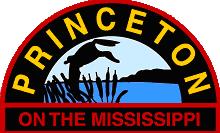WELCOME TO PRINCETON ON THE MISSISSIPPI
ANNOUNCMENTS
PROPERTY TAX HEARING 3/25/24 6 p.m. at Princeton City Hall
| fy2025local_government_property_valuation_system.pdf | |
| File Size: | 191 kb |
| File Type: | |
A friendly reminder from the Princeton Police Department to lock all vehicles, doors, and windows. Suspicious behavior and/or criminal activity can be reported by calling 9-1-1 or the Scott County Non-Emergent Number 563-324-3000
ONLINE PAYMENTS NOW AVAILABLE!
Please see the Online Payments page under the "more" tab to find out more information
Please see the Online Payments page under the "more" tab to find out more information
As a reminder to all residents; Golf Carts MUST be registered through the city and CHILDREN are NOT authorized to drive golf carts WITH OR WITHOUT a parent. Drivers need to be 18 with a valid license. Citations will be given for any residents breaking this law.
Proudly powered by Weebly


